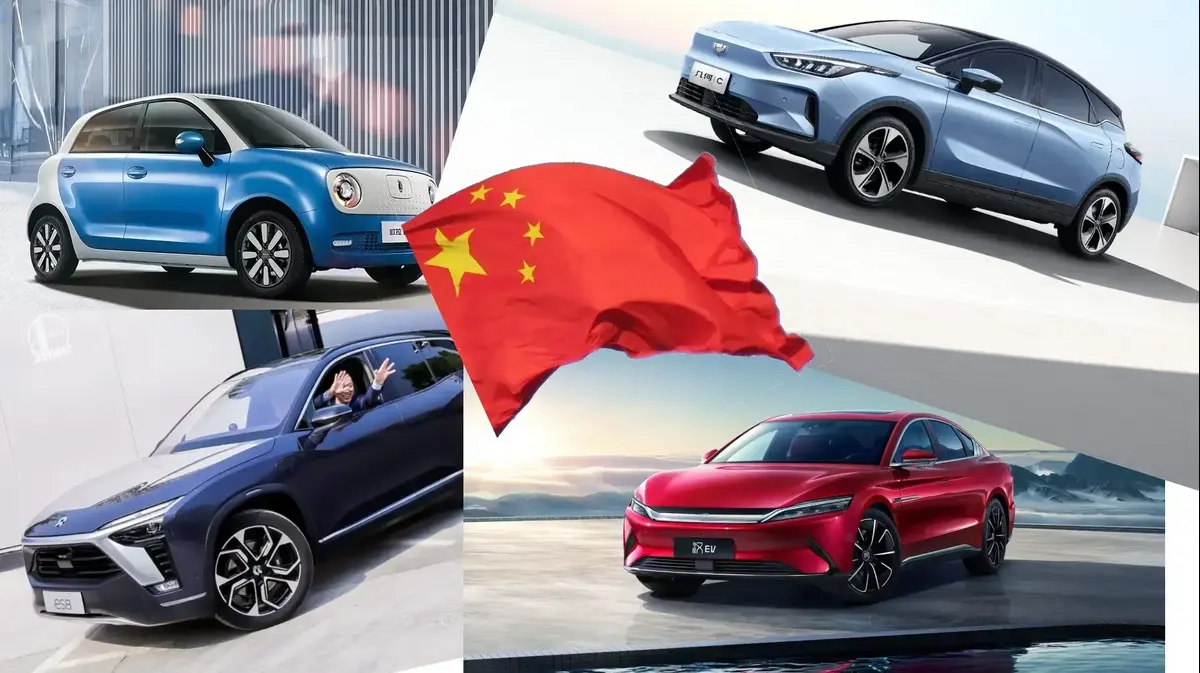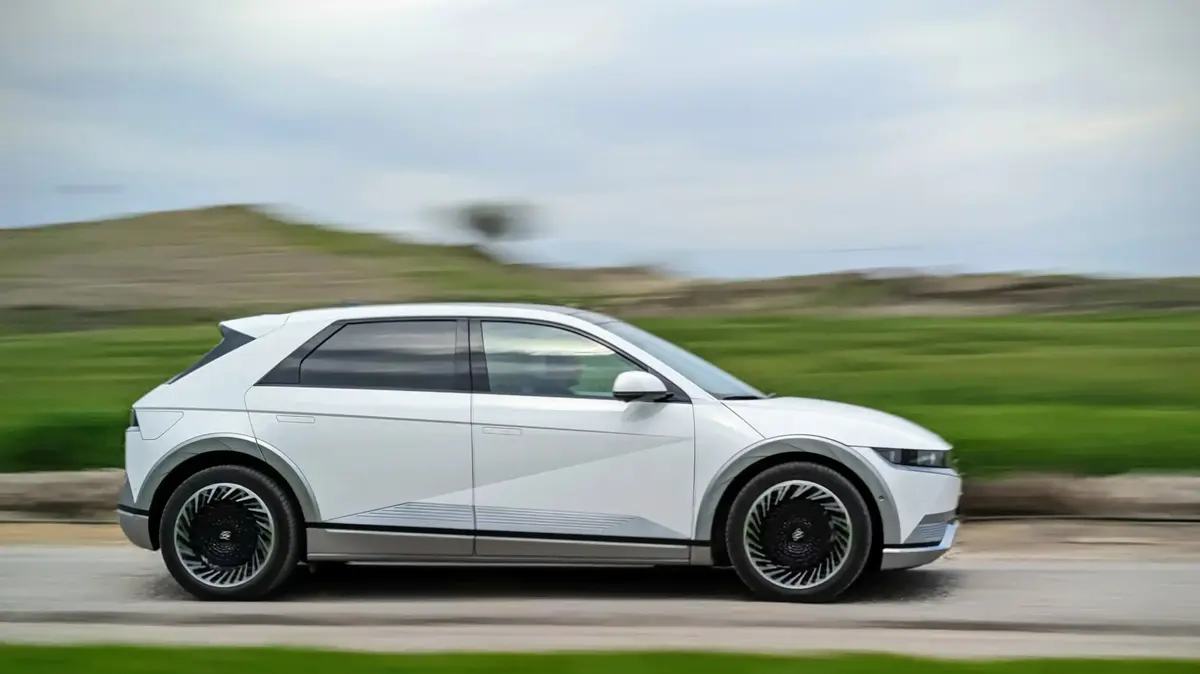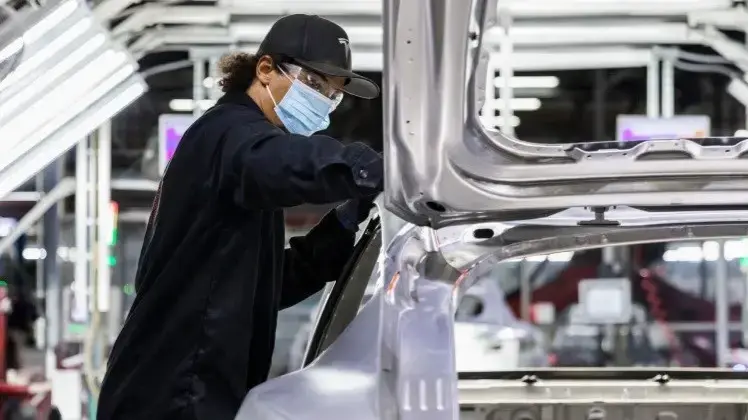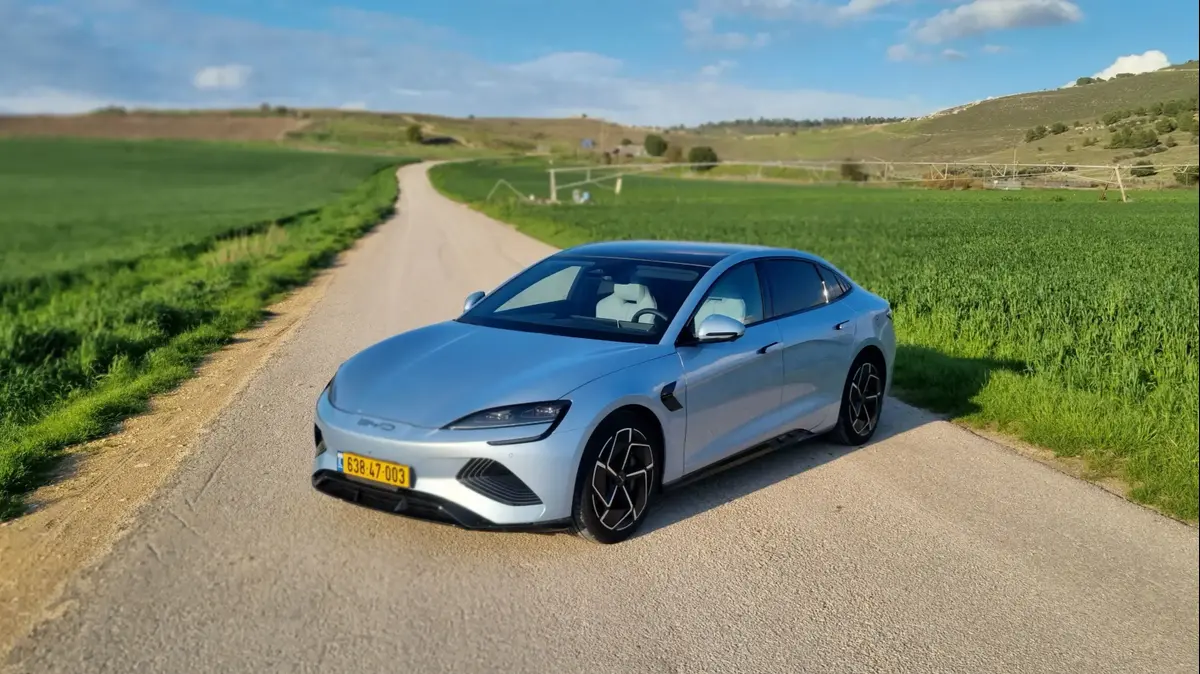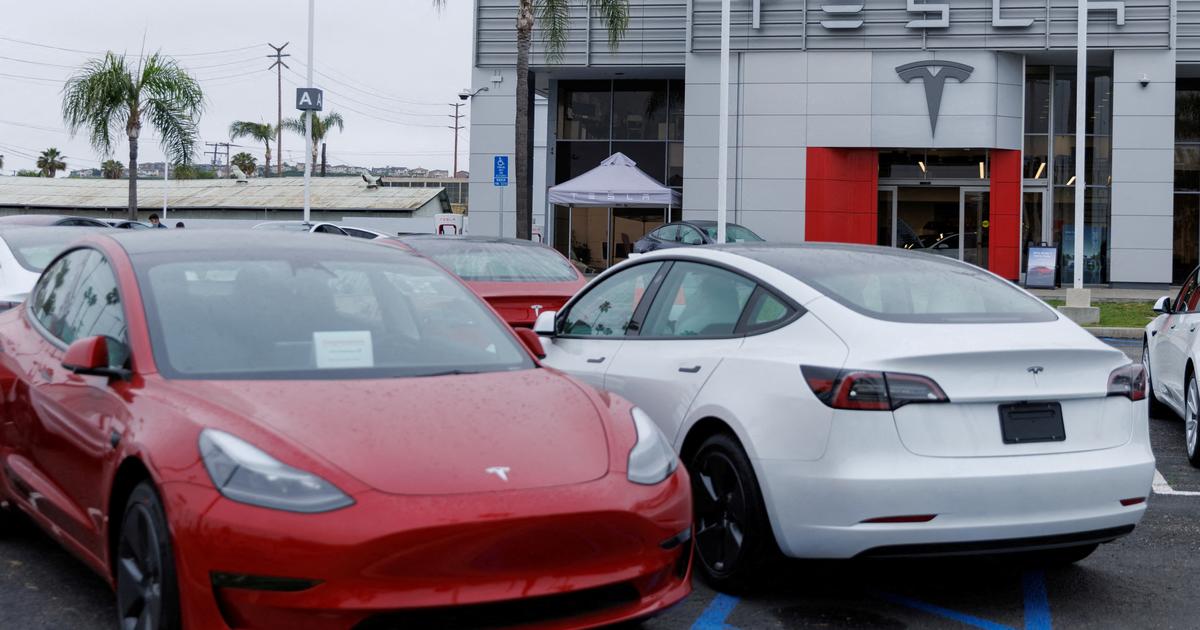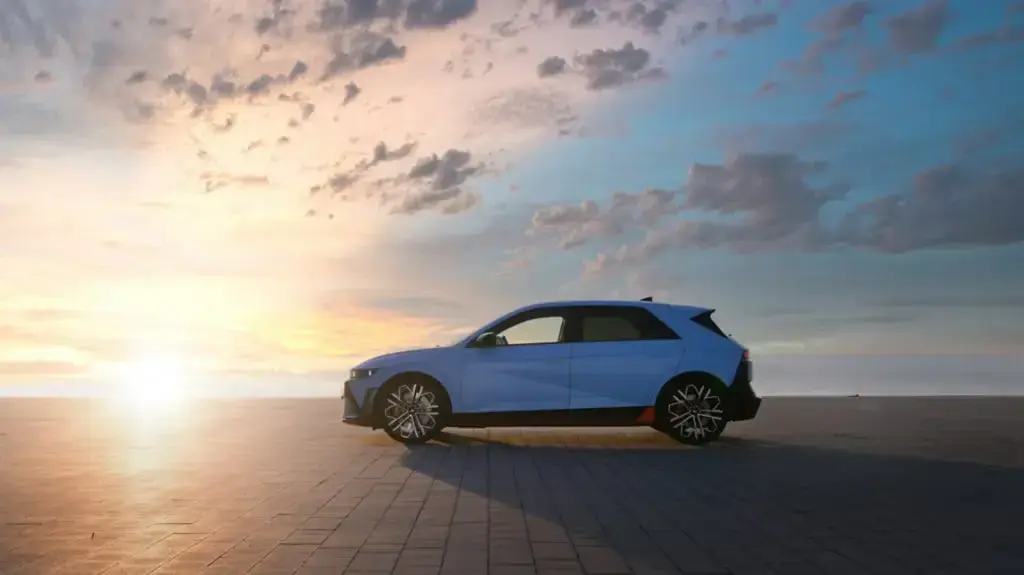The cars that changed the world: Chapter 6
The 1973 fuel crisis was the bang, but the overall process that changed the auto industry forever was a much bigger story.
Chapter 6 is a journey between logic and madness on wheels
Keenan Cohen
18/02/2022
Friday, 18 February 2022, 09:00 Updated: 09:10
Share on Facebook
Share on WhatsApp
Share on Twitter
Share on Email
Share on general
Comments
Comments
Apart from one car, there is a very, very clear common denominator here among all the others.
You can see it from the outside, you can understand it when we tell the story behind these cars - but the common denominator there.
I'll talk about it at the end and why this episode sucks and marks at least in my eyes the end of an era in the auto industry.
But what you will notice, is that the previous episodes each encompassed periods of a few years at a time.
Except for (naturally) the first chapter which spanned almost half a century, the second chapter was between 1948 and 1954, the third chapter from 1955 to 1959, the fourth from 1960 to 1964, the fifth from 1966 to 1970.
But this episode as you will notice takes us forward in a 14 year leap to 1984.
More on Walla!
So they said: The features that the car industry has promised us
To the full article
Important, iconic - but not revolutionary.
Renault 5 (Photo: Manufacturer's website)
And not that those years were devoid of interesting or important cars, absolutely not, the Alpha Secret and Fiat 127 were introduced in 1971, Renault 5, Mercedes S-Class, Honda Civic and Fiat X1 / 9 in 1972, Passat and Lamborghini Contash in 1974, B.M. Wow Series 3 in 1975 and you can go on and on year after year, really, I'm really good at this game.
But all these cars, did not do anything completely new, they were good, great, brilliant, timeless - but did not change or break through.
I have a guess for this reason, it is not grounded enough to write it and it will cost you a call for a strong beer of 10% and up.
But that does not change the fact that this episode had to stretch over a long period of time from its predecessors to collect the cars here.
Tiny and fast - Lancia Stratos (Photo: Manufacturer's website)
1973 - Lancia Stratos
Turin, Italy, 1970. As the workers make their way to the entrance to Lancia's factory a car like them they have never seen passes them by.
Shaped like a pointed wedge, bronze in color and very low.
How low?
When the car reached the entrance checkpoint - it simply drove under it to the jubilation of the amused workers.
This was the Stratos Zero, then not yet under the name Lancia, but a design project by super designer Marcello Gandini in Bartona (you may have heard of his two other cars - the Lamborghini Miura and the Contash ...).
The magnificent design house at that time was looking for the opening through which he could create working relationships with Lancia.
They knew the company was looking for a replacement for the Polvia as a rally car, and the Stratos Zero was the wedge they were going to stick inside.
And she came to Bull in time for Tzera Fiorio, the manager of Lancia's rally team who decided to do with her what no one had done before him and would become over the years what everyone else does.
Stratus Concept Zero - it was so low that it traveled under the checkpoint (Photo: Manufacturer's website)
It was the first car built from scratch with one goal - to win rally races.
A revolutionary change in a world where until then rally cars were the conversion of ordinary cars to this kind of racing.
Every aspect of it had to answer the question first - would that make it a better rally car?
The structure of the windshield, which really surrounds the driver and navigator, is designed to allow maximum forward visibility, the engine is placed behind the driver and navigator for perfect weight distribution, its plastic body was very light relative to a steel car and since you should not look back in Gandini cell design rally races also in this aspect.
Absolute dominance in the rally tracks (Photo: Manufacturer's website)
Zerza for his part, took advantage of every loophole and regulation that could be interpreted in the rules of the Rally Championship in those years.
The fact that the car was defined as a prototype in the two years before its official introduction, allowed them to compete with it under the category of Group 5, in these races it gained valuable experience and information that will be used by them later.
In addition, since the Lancia never intended to make a profit on the car in the private market, it did not require the compromises required from a regular car.
Another loophole that was exploited was the permission to make improvements in only 100 units in order to allow their use in racing.
Again, since the car was pre-designed for such end use, it was a significant shortcut and the manufacturer could focus only on specific improvements and not “waste” them on its overall upgrade.
These 100 ultra-rare units are easy to spot - the ones with the roof spoiler and the big wing on the tail.
Earned two years of experimentation and learning in Group 5 racing (Photo: Manufacturer's website)
On October 1, 1974, Lancia informed FISA, the World Automobile Racing Federation, that it met a minimum production requirement of 500 units in order to participate in a rally under Group 4 that was considered the main wrestling arena of manufacturers.
By the way, 492 units were actually built, after constantly changing its production to 400 cars during its production years.
Anyway, the day after the announcement, she shows up for the San Marino Rally and 4 days later she finishes it as the winner with more than a 7 minute lead over the Fiat-Abarth 124 Spyder (one of 7 cars Fiat has launched for the race).
This was also the case with almost a decade of marvelous stratos dominance in rally racing.
Ordinary cars simply had no chance against the tiny beast (10 cm more than the Kia Picanto for the scale), lightness (between 900 and 950 kg) and possession.
The 2.4 engine in the V6 configuration originally came from a Ferrari Dino, not after dramas by Enzo Ferrari.
It started with 190 "modest" hp in regular road cars that brought it to 100 km / h in 6.8 seconds and a maximum of 232 km / h. It went on to 275 hp and reached 320 hp in the 24-valve version .
The improved version can be identified thanks to the roof spoiler and the tail spoiler.
Only 100 units of it were built (Photo: Manufacturer's website)
The Stratos continued to garner titles and championships, including the manufacturers' championship streak in the three years between 1974 and 1976.
And would have continued even had it not been for changes in regulations in the rally laws that were intended, among other things, to moderate its dominance.
But nonetheless, it has fallen victim to domestic politics in the home-owned Fiat Group.
There they decided they wanted the Fiat-Abarth 131 as their representative, and withdrew support for the Lancia.
But even with the restrictions and without the support of Fiat it continued to record achievements in the hands of private teams, including victories over the official Lancia team which as mentioned did not really enjoy the "back" of the big Fiat.
Although it continued to compete until the early 1980s, Stratos' last major achievement was recorded in 1981, when it won the Corsica Rally by private hands and a 16-minute gap against a battery of young, fresh competitors behind huge manufacturers.
So if and when you see a stratos in a historical event or museum, stop for a moment, take off your hat and if you do not have a hat you will get one and then take it off - and dedicate a moment to this small-big car.
Volkswagen Golf GTI, the big bang of the hot compact (Photo: manufacturer's website)
1976 - Volkswagen Golf GTI
Big, big, big - Volkswagen Golf GTI was not exactly the first to introduce a sporty version of a standard passenger car, real purists will say it happened already when Carlo Ebart did it for the Fiat 500, there will be those who will mark the mini that John Cooper has become a Mini Cooper or even The Alpha Secret Ti from 1973.
But there are some differences that come down to a bottom line that make the Golf the first truly hot compact.
Because unlike the 500 called Abarth and carried other symbols it carried the company logo and was called Golf.
Unlike the mini it was not built as a motor sport version by an external enhancer, but was made within the company.
And unlike the Alpha Secret Ti it was more than a bit of embellishment and using a different carburetor that flew the power to 68 hp.
The Golf GTI put into one car all the right components together, which amounted to an earthquake that not only created a surge of cars going its course, but sub-vibrations that we feel to this day in the automotive industry.
But wait, we're jumping to crescendo when the overture here is the equally interesting part.
More on Walla!
Comparative: Volkswagen Golf GTI vs. BMW 128ti
To the full article
Became a symbol and object of imitation from the moment she was born (Photo: Manufacturer's website)
We're used to unusual cars like the Golf GTI being some side project done by some engineers or people with a touch of the technical side of things, as in the case of the BMW 02 series, but here the story started brewing rather in someone else's mind.
In the mid-1970s Anton Conard was head of the public relations department at Volkswagen and also an amateur racing driver.
Conard drove golf and knew it well, he also understood what the potential was in this car if only the right components could be planted in it.
"Some engineers in Wolfsburg thought of sporty golf at an early stage," he said in the opening of the book's 40-year-old Golf GTI, "but the prevailing view at the time was that they would have to approach this matter from a technical and diplomatic point of view." Really got excited about this thing of producing sporty golf.
The golf that replaced the beetle as the most important product for this company had to be a consensus,
Conservative society feared a brash image (Photo: manufacturer's website)
Conrad had to go the guerrilla route, not attract too much attention from the middle management, who could have interrupted the venture in Ivo, but there they already knew about his plans.
Some also openly opposed this side project of his.
He added five other "crazy talkers" from the company, including the head of golf development, the company's chassis expert, the manufacturer's senior interior designer, a marketing department man and two other engineers, one of them, from the miniature sports department.
It was a professional bunch and equally unofficial.
The key to the way Conard and his gang managed to crack their way to the GTI production was to use the Volkswagen logic, the one that would work even today - they would use the manufacturer's standard shelf parts.
This and his high diplomatic abilities, the ones he used in his other hat as the one who oversaw Volkswagen's joint ventures with East Germany.
The patent for the use of existing assemblies had another advantage, in May 1975 the approval for the "EA 195" project was given, four months later - it was ready.
Gear lever in golf ball design (Photo: Manufacturer's website)
Even when the car was first unveiled at the Frankfurt Motor Show in 1975, even before its official launch, marketers did not hide from Conard their skepticism about the project: "You will not sell even 500 units of these GTI cars" they told him.
Even the senior management at Volkswagen was reluctant to take this side venture even after it was approved to create, but they were a little more optimistic and estimated the sales volume at 5,000.
Well, justice was with the marketing people - Volkswagen did not sell 500 units of it - it sold an order of magnitude of 462,000 from the first generation of the GTI.
And the business worked because he implemented what must be at the base of any good car - a lot of simplicity, little weight and a nice herd of horses.
And the Golf was very simple with slight modifications like a reinforced chassis and sporty shock absorbers, very light with a curb weight of only 810 kg, and a herd of horses? These gave it excellent performance for a small car at the time - 9.2 seconds per 100 km / h and a maximum of 182 km / h.
In 1978 the bumpers grew (Photo: Manufacturer's website)
It also had the exterior design with a dark grille bordered by the red stripe and the trio of very prominent letters on it, the slight inflations in the wheelhouses.
Its cabin with the patterned seats that has become a must-have icon on every GTI (until a bit has been rumored in recent years, along with the rest of its concept) and the golf ball-shaped gear lever.
If the Model T invented the car for the masses, the Jeep was the father of the SUV, the Pontiac GTO if the muscle cars - the Golf was the big bang of the hot compact.
It was followed by many, very good, sometimes better, like the Peugeot 205 GTI that was introduced almost a decade after the Golf, but in the test of time is considered a classic and distinct case of "the student surpassed his rabbi" in terms of execution of that idea - a lot of fun in a little car.
Everyone was in the market when they introduced it (Photo: Manufacturer's website)
1980 - Udi Quattro
A bit like in the case of the Golf GTI, also with the Audi Quattro, technically - it was not the first road car to offer dual propulsion - the Jensen Interceptor FF did it in 1966, also the American AMC that was already on its deathbed introduced something similar with the " Eagle ".
But just like in the case of the Golf GTI - the way the Quattro did it, it was he who made all the difference.
When Ferdinand Pich, Audi's boss and over the years the entire Volkswagen Group introduced the Quattro at the 1980 Geneva Motor Show, he laid the foundations for who and what we know today as Audi.
Because the essence of this car is the manufacturer's slogan even today "advanced through technology", it was also the key he needed your mouth so that Audi could make its most significant step on the way to becoming the third rib of the German luxury manufacturers.
And if at first this story of lowering its 200 hp to the ground through a three-differential propulsion system sounds really smart and true, once the world saw it traveling it blew their minds - the ability of this car to produce traction (the ability to lower power to the road and actually translate it To grip) was something that did not exist before.
The real shock came when she boarded the rally tracks (Photo: Manufacturer's website)
And with a lot of ability to lower power and produce grip, steering and speed on low-grip surfaces, there was one place to which this car seemed to be born in advance - the rally tracks and more precisely to what was then called Group B. Its winning streak in 1982 (Manufacturers 'Championship), 1983 (Drivers' Championship ) And 1984 (Manufacturers 'and Drivers' Championships) ran its competitors to develop their dual-propulsion answers to Audi's winning machine.
The list of drivers who sat behind the wheel and linked their fate with this machine makes chills to this day Stig Bloomquist, Michelle "The Black Volcano" Moton the goddess, is Mykola and Rohl, Walter Rohl for you.
More on Walla!
First driving: the new Audi RS3
To the full article
The Quattro Sport was already its really crazy version (Photo: Manufacturer's website)
By 1985 Udi's competitors in the rally tracks already had an answer to Quattro, by which time it was already called "Sport-Quattro".
And those answers Melanchia with the Integral and Peugeot with the 205T16 were already really good.
But at this point, Udi was less interested in wallowing in kurkar, mud or snow and more in rubbing shoulders with the circle of luxury and jet.
Because there was something else the Quattro offered its customers beyond aura and ability, it was built well, really well.
This was a point that your semen really insisted on - he saw the long term and wanted customers to get a good product too, not just a good car.
A product that can be serviced in any garage of the manufacturer, with a routine and sane maintenance costs.
It's hard to believe that Lancia Integrala owners for example can say the same things about their cars.
Maintenance costs, construction quality and routine maintenance as of a normal car (Photo: Manufacturer's website)
Udi Quattro is here not just because of the achievement that changed the rally world.
But also because it has made the unbelievable way of turning a propulsion system originally designed for a rough military SUV (Volkswagen Iltis) into one that has led the manufacturer to fulfill its growth aspirations to screw into the top line of luxury manufacturers.
And although today not every Audi dual-propulsion car uses the same permanent dual-propulsion - all of them bear that name that has made history in the automotive world.
Dodge Caravan, where did the idea come from (Photo: manufacturer's website)
1983 - Dodge trailer
The story of the minivan begins long before the first modern minivan.
As early as the early 1930s a small American manufacturer called Stout introduced the Scarab, which offered a very spacious chassis and some amazing innovations for its time like air shock absorbers, fiberglass chassis and modular seats.
Its high price and limited production capacity were two problems he had to deal with and to these were first added the economic crisis of the 1930s and later World War II.
The second time an attempt was made to produce a passenger car in the structure of a vehicle with a spacious passenger space and a non-commercial vehicle, was by Fiat, with the 600 Multipla.
But even though it theoretically included 6 seats, it was a very small car (3.5 meters long) and too weak to provide a real solution for the traveling family.
Stout Scarab, the first minivan.
Did not cross the hurdle of mass production (Photo: Manufacturer's website, Michael-Furman)
The idea of a vehicle in a unified box configuration, one that would lead to maximum utilization of interior space has come up in a number of concepts over the years, but has never matured into production.
The combination of relatively small families reduced the need for such a vehicle on the one hand, and on the other hand being content with little and willingness to compromise on the quality of life in the popular cars of yesteryear, led to a solution in the form of a converted commercial vehicle.
But this thing was about to take a significant turn.
In the early 1970s, Chrysler's two European arms - Chrysler UK and Simca (then Chrysler's French division) worked on the concept of a box-shaped passenger car that would create optimal utilization of interior space.
Simca's design is done by the French target company, whose main business was in the field of aviation and rockets, but also made a round in the automotive world.
In 1978 these two divisions were sold to PSA (Peugeot Citroen) which disqualified the vehicle due to its expected cost and what they saw as commercial unprofitability.
The one who does show interest in that design of a target is Renault, which continues the development of the vehicle under the name "Espas".
Peugeot gave up, Renault took.
Renault Espas was the first European minivan (Photo: Manufacturer's website)
But in the meantime, on the other side of the world, a new CEO is appointed for Chrysler who was in big trouble in the late 1970s - his name is Iakuka and you know him the pain of the Mustang. Something no one else has, he finds it in a minivan.With
a square design, front-wheel drive platform, side doors, 5, 6 or 7 passenger configurations and passenger car road customs - Americans find there is a better solution here than even the big station wagons that filled the role This until then. Customers go crazy over this new vehicle and it becomes an overnight hysterical hit.
The Americans attacked the innovative concept (Photo: Manufacturer's website)
The engines start with four simple cylinders with a volume of 2.2 of Chrysler with a power of 96 hp and a 2.6 engine of a Mitsubishi with an output of 104 hp.
Later, a 3.3-liter V6 engine and another Mitsubishi engine, also a 3.0-liter V6, joined the offer.
The arrangement of relatively small engines and front-wheel drive have made the Chrysler family of minivans very economical compared to the numbers they have known there in the past.
As mentioned, like the Mustang, Iakuka was able to crack again the big secret of marketing - not to meet an existing need, but to challenge in offering a solution that the customer himself did not think of his need for.
And he did so in a very short period of time between development and production itself.
And in light of the details in the introduction to the minivan story, I'll just ask here a simple question, was it really his idea, or did someone at Chrysler take care to lay hands on those plans of purpose and flush and pull them out at the right moment.
Either way, in November 1983 the first modern minivan took the stage, and it did so just 7 months before in June 1984 Renault introduced the Espas.
BMW M5, first to its name (Photo: Manufacturer's website)
1985 - BMW M5
The BMW M5 is a saloon car with a large engine and lots of power.
"OK", you can say "a lot of manufacturers have already done this before, so what?"
- And this is not a mistake, because there were really others who did it from Cadillac to Maserati, from Rover to Opel, Mercedes and Oldsmobile - all and others had saloon cars that knew how to beat dizzying speeds thanks to large and powerful engines implanted in them.
When the first M5 to its name was introduced in 1985 in a generation called the E28 spoke Bimmer, it was based on the 535M version of the model into which the M88 / 3 engine of the BMW M1 supercar was implanted.
Six cylinders in a 3.5-liter column with a maximum of 286 hp and 251 km / h.
It made it fast, not just fast - it was the fastest serial sedan in the world.
"Well, then she's the fastest. Still, why is she here?"
The mythical engine of the M1 (Photo: manufacturer's website)
But, and this is a very big but - she was fast and not just in a straight line - she behaved on the road and on the track in a way that no car of its kind could get close to.
Because in addition to throwing in a superhero engine they also replaced the brakes with fan discs retracted in four calipers, the chassis was hardened, the suspensions were recalibrated to support the car under load and the brakes were hardened and lowered.
And it was light, really light - 1,410 kg - less than the average family weight with twice the power, in terms of 1985 it was a formidable monster.
How seriously and anxiously BMW took this car can be learned a specification that not many people know about it, in its 3 years of production each of the M5 cars was built by hand.
With a number of 2,241 units (or 2,191 units according to other sources) this M5 is one of the rarest and most sought after among collectors from BMW's serial cars.
Its slow pace of construction and huge demand led to the fact that when in November 1988, when the last M5 went off the production line, it was almost a year after production of that generation was stopped.
It just looked like another BMW 5 Series (Photo: Manufacturer website)
אז למה הפרק הזה היה מבאס? ואיך פרק שכולל את הסטראטוס, אחת האהובות עלי, מכונית כמו גולף GTI, אגדה מהפכנית כמו הקוואטרו והאחרות יכול להיות כזה? אז הסיבה היא המשותף להן. למעט הסטראטוס, כל המכוניות האחרות הן גאוניות והגיוניות באותו זמן. מהמרכב של הגולף לשימושיות של ה-M5. ממכונית הראלי המוחלטת לקופסת האנשים המרווחת - משהו בעשור וקצת ההוא סימן ומסמן את השינוי שעברה תעשיית הרכב.
מין נקודת זמן שממנה ואילך המכוניות שנקבל צריכות היו להיות קודם כל "נכונות" ו"מתאימות" ושוועדות יאשרו אותן ולעיתים נדירות מין הבלחה של פרץ יצירתיות. אז נכון, תעשיית הרכב נהייתה גם טובה יותר, איכותית יותר והציעה מוצרים טובים, אמינים ובטוחים מאשר בעבר, ובכל זאת, המשהו החמקמק הזה שהייה במכוניות הגדולות באמת - פשוטות או מורכבות, זולות או יקרות ושקדמו לעשור הזה התעמעם.
אז את מי אתם הייתם לוקחים לחנייה הפרטית שלכם מהמכוניות בפרק הזה?
vehicle
Car News
Tags
Udi
BMW
Volkswagen
Lancia
Dodge


